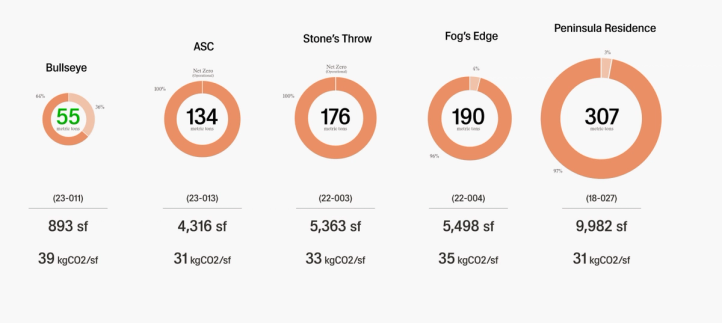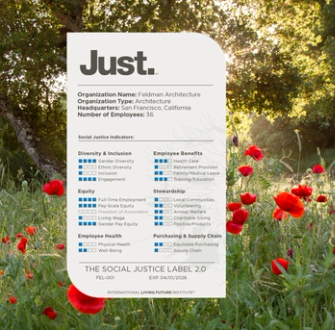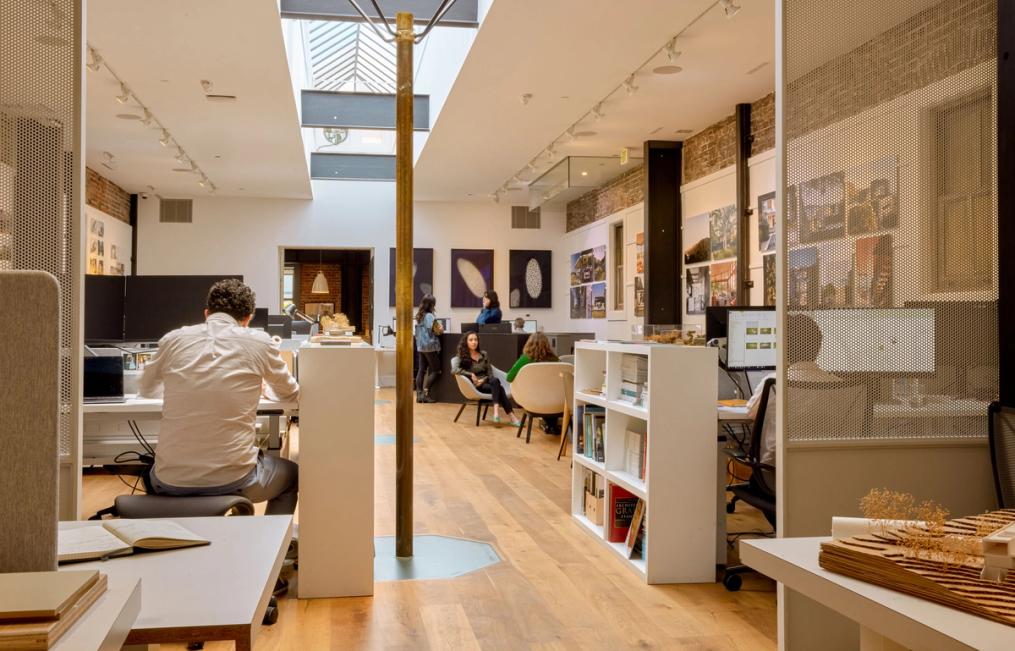
Feldman Architecture's 2024 Corporate Social Responsibility Report
Diversity fuels great design.
We firmly believe that a diversity of voices in our studio and design processes creates a richness that we're passionate about protecting and fostering. Our Corporate Social Responsibility committee is eager to issue our 2024 report, outlining our efforts to create an equitable and diverse workplace that acts as a force for good in the world and values, promotes, and supports its people. We're proud of the work we've done thus far, and motivated to recognize, address, and work on our shortcomings.
Our studio aims to reflect and act on our organization's social, moral, and environmental obligations, to ensure our collective efforts represent our values, and to move our practice towards a more responsible architecture that brings greater purpose and impact to our work.
We have adopted the ESG framework (Environment, Social, & Governance) to set goals and evaluate our successes and shortcomings. Within each area of focus, we've identified sub-focuses that further define our ESG commitment. Our annual report, which you can explore in its entirety here, summarizes the studio’s initiatives, progress, and challenges in 2024, specifically related to the highlighted sub-focus areas below. This blog post pulls out a few key 2024 metrics to review at a glance.
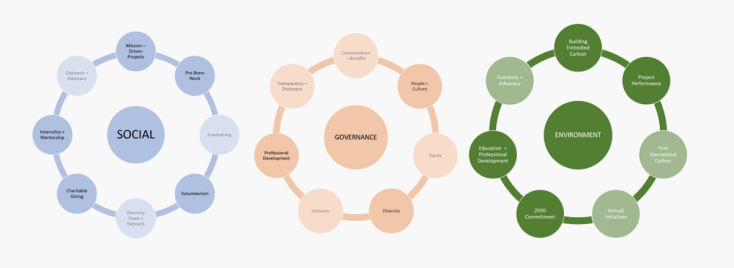
Using the Just Label as an ESG Framework
In 2024, Feldman Architecture earned a Just Label certification. To complete this in-depth, self-reporting process, we spent a year reviewing and discussing our studio’s operations and policies, reflecting on where we wanted to focus our efforts and allocate resources to create a more equitable practice.
The Just Label, run by the International Living Future Institute, functions similarly to a nutrition label that scores organizations on socially just and equitable operations and policies. As a voluntary disclosure tool, it’s a transparency platform for organizations to disclose specific information about their operations, from employee demographics and benefits to financial and community investments.
The score for each Just indicator ranges from 0-4. To receive score of 1, the organization needs to have a policy written specifically addressing the indicator and its requirements, while each subsequent point raises the bar substantially. Receiving a 2 in certain categories required significant discussion and policy changes, which we were excited to make. We are very proud of our Just label certification and have set 1-year and 3-year goals to continue to level-up.
See Feldman Architecture’s complete Just Dashboard here, which provides information on each of our 24 performance indicators, as well as our company policies individually addressing each indicator. After reviewing our handbook, we solidified policies we’re proud of, such as a comprehensive 6-8 week Family/Medical Leave policy, 8 paid hours of volunteer time per staff member annually, a comprehensive healthcare, vision, and dental plan that covers 90% of total costs, and $1,000 of Continuing Education benefits per employee annually.
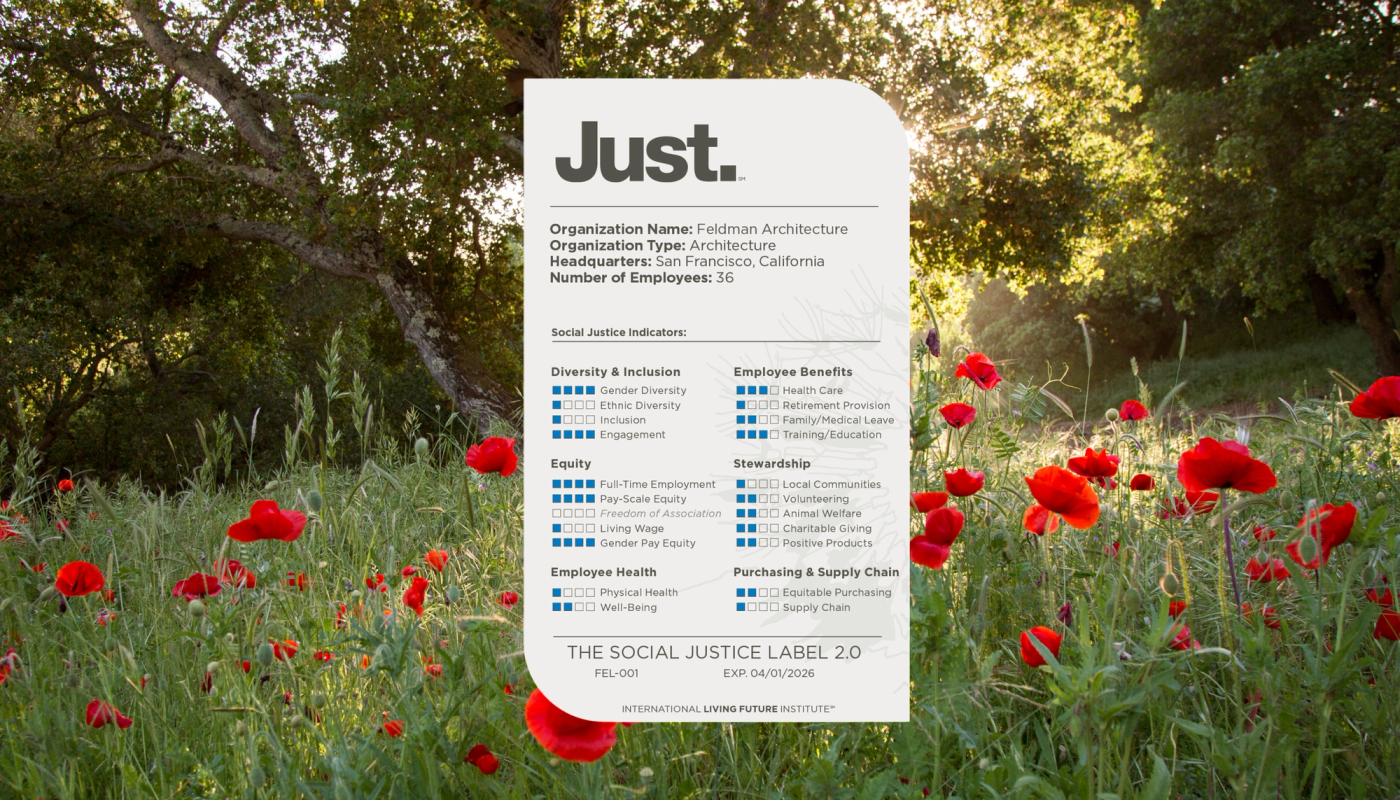
Demographics + DEIB
Each year, the CSR Committee issues an anonymous Belonging, Inclusion, and Engagement survey, allowing staff to self-identify their gender and ethnicity. In 2024, we issued this survey based on the Just Label Inclusion, Engagement, and Demographic requirements.
At Feldman Architecture, in September when the survey was issued, we had 36 full time employees and 31 staff members completed the survey. Therefore, this isn’t a completely holistic view of the studio’s demographics. While we are happy with our balance of Male and Female/Non-Binary staff (which trends around 50/50), we’d like to continue to foster a culture which encourages an increase in ethnic diversity within our studio. In 2025, we aspire to have 100% survey participation, and issue a separate survey to firm leadership to collect more accurate demographics among our staff.
The second section of the survey allowed staff to share their general sentiments about office culture. We are pleased by the overall positive response to these questions, and aim to work towards all employees feeling included. Later in 2024, a more in-depth all office survey was issued by the leadership team to more accurately identify particular issues or challenges in our office culture.
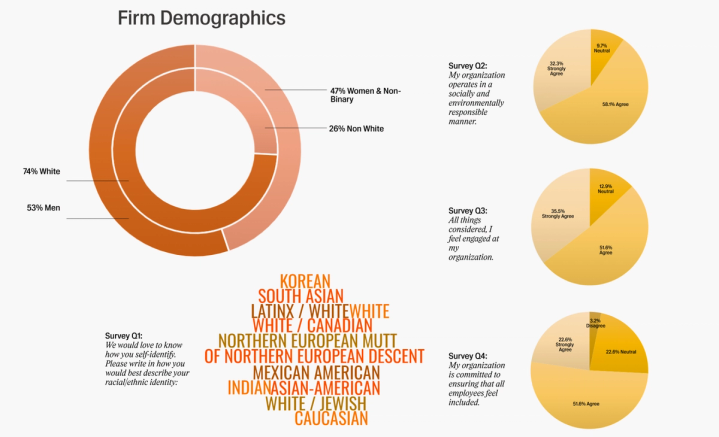
Volunteering and Charitable Giving
As a Just Label Commitment, Feldman Architecture allots 8 hours of paid volunteer time per full time employee. Employees are free to use that time volunteering at charities of their choice, or join their colleagues at a firm sponsored event with organizations vetted by our CSR Committee.
In 2024, Feldman Architecture staff volunteered for 82 hours. After much discussion and research, we’ve chosen to focus our efforts on exposing students from a variety of backgrounds to the AEC industry by using our professional skills to help our local community. We’ve found that a lack of diversity in the profession directly stems from a lack of opportunity and exposure to architecture and design in underserved high schools and community colleges.
Our team welcomed high school students from Summer Springboard to the office for a studio tour and design presentation, presented and tabled at Thurgood Marshall Academic High School’s Career Week, volunteered serving lunches through GLIDE, mentored students through AFSF, and volunteered with Rebuilding Together for a She Builds community repair project.
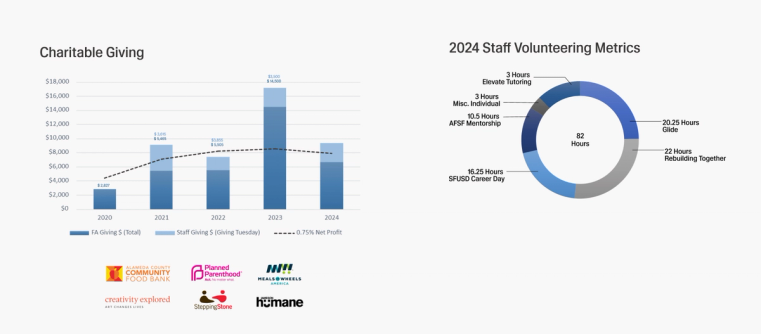
Pro Bono + Mission Driven Projects
In 2024, Feldman Architecture worked with four mission driven groups and completed a total of 179 hours of pro bono work, including our Shelter Project, and Misssey Headquarters, pictured below! Per our Pro Bono commitment, our studio has committed to donate 1% of staff hours per year to pro bono work. This is equivalent to 20 hours per staff member. In the recent years, we have found it surprisingly difficult to meet our 1% goal. This has been due to various factors including identifying and landing meaningful Pro Bono work, project schedules, project size, projects going on hold, discounted billing methodology, staff bandwidth, and the financial repercussions of the pandemic to our project load.
In 2025, we aim to take on more Pro Bono work after reviewing these metrics. We will be reviewing our priorities and procedures with the aim to gain alignment with our 1% commitment.
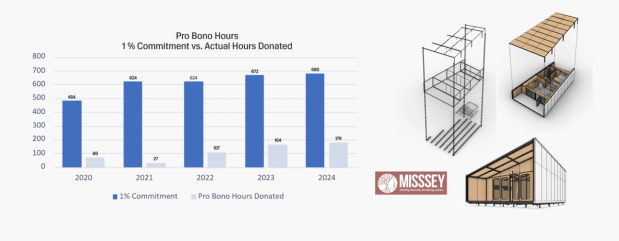
2024 in Sustainability
In December of 2016 Feldman Architecture signed on to the AIA 2030 Commitment, a shared dedication to make all new buildings, developments, and renovations carbon-neutral by 2030. Upon the recent release of the 2023 The American Institute of Architects (AIA) By the Numbers report detailing the impact of the AIA 2030 Commitment, Feldman Architecture was one of the 31 signatories nationally who reported 80% pEUI reduction target across their entire portfolio.
In 2024, our project portfolio reported a 93.82% average EUI reduction, which, when measured against our 80% reduction goal for 2023, far exceeded our goal. 10 out of 13 of our current projects are predicted to meet our 2030 commitment as they are designed.
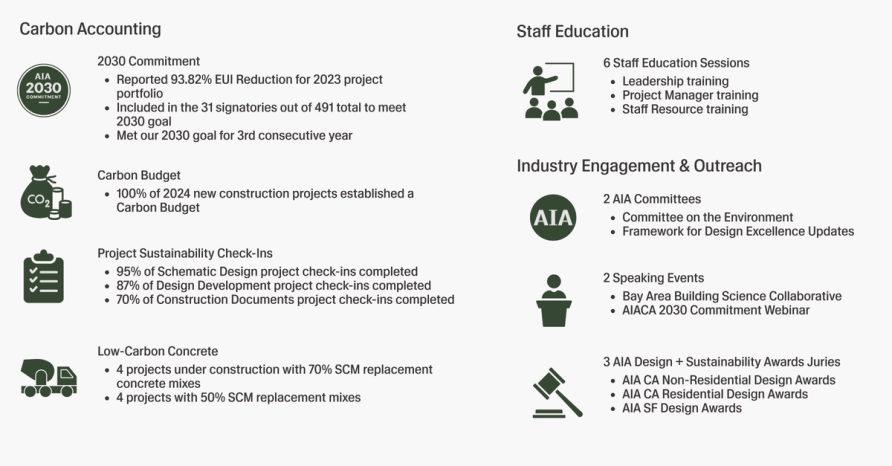
Carbon Budget
Launched in Spring 2023, Feldman Architecture’s office-wide carbon budget for residential projects is set at an ambitious 100 metric tonnes, tracks and measures each project’s predicted carbon emissions from design through post-occupancy. This initiative is the first of it’s kind, and has inspired our staff, clients, and consultants to consider each project’s carbon emissions more seriously, earlier in the process, and track and mitigate them more tangibly.
We are working closely with our clients, consultants, contractors, and vendors to thoughtfully employ passive design strategies, champion efficient mechanical & plumbing systems, and source responsible, healthy materials.
In 2024, we tracked each project’s total embodied and operational carbon emissions as they are designed. The case studies below were selected to illustrate a range of current work from smallest to largest residential projects. The darker orange circle represents the project’s embodied carbon, and the light orange illustrates the operational carbon. ASC, for example, shows 100% embodied carbon and is net-zero, so there is no operational energy associated with the project. The carbon footprint per square foot allows for a direct comparison between projects. For a deeper dive, read our full Carbon Budget case study about Fog’s Edge.
